#Sanchia of Provence
Text


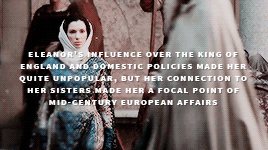

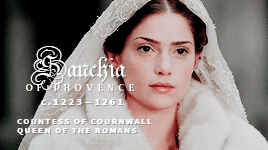
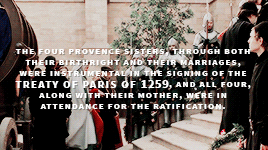
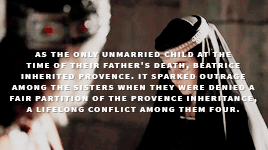
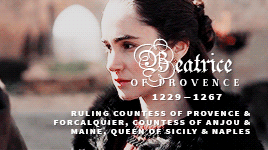
historical sisters (1/∞)
— Marguerite, Eleanor, Sanchia and Beatrice of Provence
Four sisters who had risen from near obscurity to become the most celebrated and powerful women of their time. Almost nothing of significance that occurred in Western Europe during the period in which they lived was not influenced by the actions of their family. It is impossible to fully understand the underlying political motivations of the thirteenth century without them. — Nancy Goldstone, Four Queens: The Provencal Sisters Who Ruled Europe
#historyedit#marguerite of provence#eleanor of provence#sanchia of provence#beatrice of provence#13th century#mine#*#*hsisters
210 notes
·
View notes
Photo


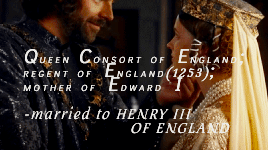

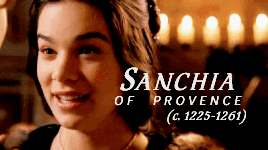



♕ — The Four Queens
"In fact, this elite gathering represented the triumph of international diplomacy. <…> The architects of this diplomatic coup were neither ambassadors nor statesmen. No king’s counselor had a hand in it, no great knight nor influential baron. It was managed entirely by one family –a family of four sisters who had risen from near obscurity to become the most celebrated and powerful women of their time. Almost nothing of significance that occurred in Western Europe during the period in which they lived was not influenced by the actions of this family. It is impossible to fully understands the underlying political motivations of the thirteenth century without them."
— Nancy Goldstone, Four Queens: The Provencal Sisters Who Ruled Europe
#historyedit#history#margaret of provence#eleanor of provence#sanchia of provence#beatrice of provence#perioddramaedit#louis ix#henry iii#edward i#cortegiania#gifshistorical#perioddramasource#periodedits#onlyperioddramas#userperioddrama#queenage#women in history#my edit#*queens#fancast olivia ross from knightfall as literally every medeival lady -challenge
289 notes
·
View notes
Text
Marguerite of Provence, Queen of France
Marguerite of Provence, Queen of France
Marguerite of Provence from a fifteenth century manuscript
Raymond-Berengar V, Count of Provence, married Beatrice of Savoy in 1219. Their eldest daughter Marguerite was born in the spring of 1221 in Forcalquier, and they would have three more daughters, all of whom would become queens. Marguerite married Louis IX of France, Eleanor married Henry III of England, Sanchia became queen of the…
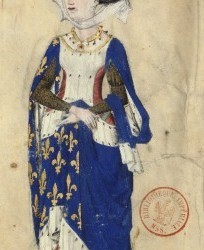
View On WordPress
#Beatrice of Provence#Beatrice of Savoy#Blanche of Castile#Charles of Anjou#Count of Provence#Count of Toulouse#Eleanor of Provence#French history#King of France#King of Sicily#Louis IX#Marguerite of Provence#medieval history#Philip III#Philip IV#Queen of England#Queen of France#Raymond VII#Raymond-Berengar V#Sanchia of Provence
2 notes
·
View notes
Text
Events 5.27
1096 – Count Emicho enters Mainz, where his followers massacre Jewish citizens. At least 600 Jews are killed.
1120 – Richard III of Capua is anointed as Prince two weeks before his untimely death.
1153 – Malcolm IV becomes King of Scotland.
1199 – John is crowned King of England.
1257 – Richard of Cornwall, and his wife, Sanchia of Provence, are crowned King and Queen of the Germans at Aachen Cathedral.
1644 – Manchu regent Dorgon defeats rebel leader Li Zicheng of the Shun dynasty at the Battle of Shanhai Pass, allowing the Manchus to enter and conquer the capital city of Beijing.
1703 – Tsar Peter the Great founds the city of Saint Petersburg.
1798 – The Battle of Oulart Hill takes place in Wexford, Ireland; Irish rebel leaders defeat and kill a detachment of militia.
1799 – War of the Second Coalition: Austrian forces defeat the French at Winterthur, Switzerland.
1813 – War of 1812: In Canada, American forces capture Fort George.
1860 – Giuseppe Garibaldi begins his attack on Palermo, Sicily, as part of the Italian unification.
1863 – American Civil War: First Assault on the Confederate works at the Siege of Port Hudson.
1874 – The first group of Dorsland trekkers under the leadership of Gert Alberts leaves Pretoria.
1883 – Alexander III is crowned Tsar of Russia.
1896 – The F4-strength St. Louis–East St. Louis tornado hits in St. Louis, Missouri, and East St. Louis, Illinois, killing at least 255 people and causing over $10 million in damage.
1905 – Russo-Japanese War: The Battle of Tsushima begins.
1915 – HMS Princess Irene explodes and sinks off Sheerness, Kent, with the loss of 352 lives.
1917 – Pope Benedict XV promulgates the 1917 Code of Canon Law, the first comprehensive codification of Catholic canon law in the legal history of the Catholic Church.
1919 – The NC-4 aircraft arrives in Lisbon after completing the first transatlantic flight.
1927 – The Ford Motor Company ceases manufacture of the Ford Model T and begins to retool plants to make the Ford Model A.
1930 – The 1,046 feet (319 m) Chrysler Building in New York City, the tallest man-made structure at the time, opens to the public.
1933 – New Deal: The U.S. Federal Securities Act is signed into law requiring the registration of securities with the Federal Trade Commission.
1935 – New Deal: The Supreme Court of the United States declares the National Industrial Recovery Act to be unconstitutional in A.L.A. Schechter Poultry Corp. v. United States, (295 U.S. 495).
1937 – In California, the Golden Gate Bridge opens to pedestrian traffic, creating a vital link between San Francisco and Marin County, California.
1940 – World War II: In the Le Paradis massacre, 99 soldiers from a Royal Norfolk Regiment unit are shot after surrendering to German troops; two survive.
1941 – World War II: U.S. President Franklin D. Roosevelt proclaims an "unlimited national emergency".
1941 – World War II: The German battleship Bismarck is sunk in the North Atlantic, killing almost 2,100 men.
1942 – World War II: In Operation Anthropoid, Reinhard Heydrich is fatally wounded in Prague; he dies of his injuries eight days later.
1950 – The Linnanmäki amusement park is opened for the first time in Helsinki.
1958 – First flight of the McDonnell Douglas F-4 Phantom II.
1960 – In Turkey, a military coup removes President Celâl Bayar and the rest of the democratic government from office.
1962 – The Centralia mine fire is ignited in the town's landfill above a coal mine.
1965 – Vietnam War: American warships begin the first bombardment of National Liberation Front targets within South Vietnam.
1967 – Australians vote in favor of a constitutional referendum granting the Australian government the power to make laws to benefit Indigenous Australians and to count them in the national census.
1967 – The U.S. Navy aircraft carrier USS John F. Kennedy is launched by Jacqueline Kennedy and her daughter Caroline.
1971 – The Dahlerau train disaster, the worst railway accident in West Germany, kills 46 people and injures 25 near Wuppertal.
1977 – A plane crash at José Martí International Airport in Havana, Cuba, kills 67.
1971 – Pakistani forces massacre over 200 civilians, mostly Bengali Hindus, in the Bagbati massacre.
1975 – Dibbles Bridge coach crash near Grassington, in North Yorkshire, England, kills 33 – the highest ever death toll in a road accident in the United Kingdom.
1980 – The Gwangju Massacre: Airborne and army troops of South Korea retake the city of Gwangju from civil militias, killing at least 207 and possibly many more.
1984 – The Danube–Black Sea Canal is opened, in a ceremony attended by the Ceaușescus. It had been under construction since the 1950s.
1988 – Somaliland War of Independence: Somali National Movement launches a major offensive against Somali government forces in Hargeisa and Burao, then second and third largest cities of Somalia.
1996 – First Chechen War: Russian President Boris Yeltsin meets with Chechnyan rebels for the first time and negotiates a cease-fire.
1997 – The 1997 Central Texas tornado outbreak occurs, spawning multiple tornadoes in Central Texas, including the F5 that killed 27 in Jarrell.
1998 – Oklahoma City bombing: Michael Fortier is sentenced to 12 years in prison and fined $200,000 for failing to warn authorities about the terrorist plot.
2001 – Members of the Islamist separatist group Abu Sayyaf seize twenty hostages from an affluent island resort on Palawan in the Philippines; the hostage crisis would not be resolved until June 2002.
2006 – The 6.4 Mw Yogyakarta earthquake shakes central Java with an MSK intensity of VIII (Damaging), leaving more than 5,700 dead and 37,000 injured.
2016 – Barack Obama is the first president of United States to visit Hiroshima Peace Memorial Park and meet Hibakusha.
2017 – Andrew Scheer takes over after Rona Ambrose as the leader of the Conservative Party of Canada.
2018 – Maryland Flood Event: A flood occurs throughout the Patapsco Valley, causing one death, destroying the entire first floors of buildings on Main Street in Ellicott City, and causing cars to overturn.
0 notes
Photo





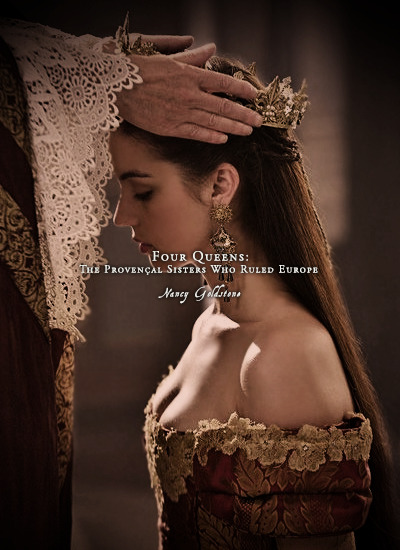
Favorite History Books || Four Queens: The Provençal Sisters Who Ruled Europe by Nancy Goldstone ★★★☆☆
Marguerite, Eleanor, Sanchia, and Beatrice, as daughters of the count and countess of Provence, were steeped in the culture of the troubadours. It played as important a role in their upbringing as their lineage—indeed, it was their lineage. Their father, Raymond Berenger V, came from a long line of poets. His grandfather, Alfonso II, king of Aragon, was a highly respected troubadour whose verses were praised by Peire Vidal, the greatest poet of his day. Raymond Berenger V inherited his grandfather’s talent and passion for literature, and embraced the troubadour culture. He wrote verses and his castle was always open to visiting poets and minstrels. His was a very literary court.
... Despite the troubadours’ influence, by all accounts, the sisters’ mother, Beatrice of Savoy, countess of Provence, was very happy with her husband. Beatrice had married Raymond Berenger V in 1219, when he was fourteen and she twelve. Raymond Berenger V was the first count of Provence to actually live in Provence in more than a century—all his predecessors had preferred to stay in Aragon. During the summer months, when the weather was fine, he and Beatrice traveled around the county, meeting the barons and accepting their homage. The count was young and strong and athletic: he climbed the long eastern side of the Alps and visited villages unknown to his ancestors. In the winter months, he and Beatrice held court at their castle in Aix-en-Provence, or sometimes went south to Brignoles, which he had given to Beatrice as a wedding present.
Beatrice gave birth to twin sons in 1220, but they did not survive. Marguerite was born in 1221, when Beatrice was just fifteen years old. Eleanor came in 1223, followed by Sanchia in 1228, and finally the baby, Beatrice—four girls in ten years. The children inherited their mother’s loveliness. The renowned thirteenth century English chronicler Matthew Paris, an eyewitness with no great love of foreigners, called Beatrice of Savoy “a woman of remarkable beauty.” But she was also intelligent and capable. One of ten children, eight of whom were boys, Beatrice had learned at an early age to value strength and power. From her father, Thomas, a bellicose, domineering man who was happiest when making war on his neighbors, she had inherited a family ethos of solidarity at all cost. Thomas had ruled his large, unwieldy brood unconditionally and with an iron will. From their first breaths, Beatrice and all of her siblings had been taught to think first of the family’s ambitions, and these were many.
… During this period, Marguerite and Eleanor, only two years apart, were each other’s constant companion (Sanchia and Beatrice were too young to be interesting as playmates). Marguerite’s temperament resembled her mother’s. She was patient, capable, intelligent, and responsible, with a rigid and highly developed sense of fairness. Eleanor was more mercurial. As is often the case with second children, she both admired and competed with her accomplished older sister. The differences in their personalities were complementary, and the bonds these two established while growing up in Provence would survive into adulthood. Marguerite and Eleanor were always much closer to each other than they were to either Sanchia or Beatrice.
... Raymond Berenger V and his family were very much a part of this culture of studied affluence. They entertained often and lavishly. “Count Raymond was a lord of gentle lineage…a wise and courteous lord was he, and of noble state and virtuous, and in his time did honorable deeds, and to this court came all gentle persons of Provence and of France and of Catalonia, by reason of his courtesy and noble estate,” wrote the medieval chronicler Giovanni Villani. Among his many visitors were his wife’s brothers. The count kept a large retinue and rewarded his entourage with gifts of money and clothes. His daughters were dressed in gowns of rich red cloth, the sleeves long and tightly laced to their arms. Over this they might wear a jacket of green silk. White gloves protected their hands from the sun. Even as children, they had their hair, which they wore down around their shoulders (only married women put up their hair), dressed in jeweled combs.
#historyedit#litedit#margaret of provence#eleanor of provence#sanchia of provence#beatrice of provence#medieval#french history#european history#english history#german history#italian history#women's history#history#history books#nanshe's graphics
97 notes
·
View notes
Photo
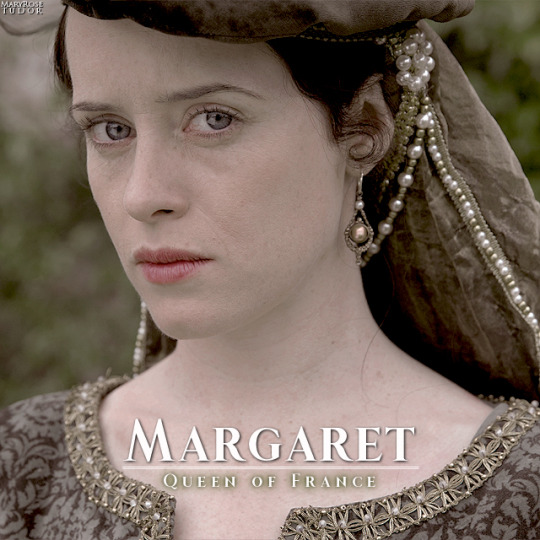



#margaret of provence#marguerite of provence#eleanor of provence#sanchia of provence#beatrice of provence#fancast#dreamcast#myedits
191 notes
·
View notes
Text
28th February 1261 - Birth of Margaret of Scotland, Queen of Norway
On the last day of February, in the year 1261, a Scottish princess was born at Windsor Castle. Named Margaret like her mother, who was the daughter of Henry III of England, this infant girl was the firstborn child of Alexander III of Scotland. The young Margaret of Scotland would eventually marry King Eirik II of Norway, and she is perhaps best known as the mother of another Margaret, “the Maid of Norway”, who eventually inherited the Scottish crown.
In 1261, the birth of Margaret of Scotland was a cause for celebration but it also had potentially awkward diplomatic consequences. Both careful domestic preparations and international legal wrangling attended the birth of the king of Scotland’s first heir outwith the realm. These arrangements reveal contemporary anxieties about the status of the Scottish kingdom and its relationship with the neighbouring king of England, despite the close family relationship which existed between the two ruling houses in the 1260s.

(Margaret of England, her siblings, and their father Henry III, as portrayed in an early fourteenth century genealogical roll. Reproduced by permission of the British Library under a Creative Commons CC0 1.0 Universal Public Domain Dedication.)
Although Alexander III and Margaret of England had been married for nine years by 1260, they were still young- just nineteen and twenty respectively. The child which Margaret discovered she was carrying in the autumn of that year was probably her first. In such circumstances it would have been natural for Margaret to wish for the company of her own family, especially since, despite their other faults, Henry III and Eleanor of Provence had always been attentive parents.
For the queen of Scots, political responsibilities tended to hinder family gatherings, but on this occasion she was in luck. It had been arranged that Margaret and her husband would travel south to her father’s court over the autumn and winter of 1260. This was a friendly visit, although Alexander III probably also intended to settle some diplomatic scores, put his English estates in order, and squeeze the rest of his wife’s dowry out of his father-in-law. Meanwhile Margaret would be reunited with her parents and brothers, and the couple would then spend the festive season residing in style as the English king’s honoured guests.
It is unclear whether Margaret’s pregnancy was common knowledge when this visit was first arranged. In documents dated 17th August 1260, when the king and queen of Scots were initially granted safe conducts through England, no mention was made of the queen’s condition. The pregnancy was first alluded to on 30th September, by which time Alexander and Margaret were expected to arrive at the Scottish border burgh of Berwick-upon-Tweed in just over a week. Even then the record dealt in hypotheticals- “if” the Queen of Scotland became pregnant in England and “if” the child was born there, the king of England promised not to detain them in his realm. Indeed, one chronicler even claimed that Margaret of England was deliberately obscure about how far her pregnancy had advanced, so that she could give birth in her home country. Nevertheless, the queen’s pregnancy does not appear to have been a major cause for concern at first- and in any case, Margaret was not about to let it stop her from accompanying her husband to England...
In early October 1260, the king and queen were supposed to arrive at Berwick and from there the English king had deputed John Mansell, keeper of the see of Durham, to escort them through the palatinate. Although English official documents indicate that the royal couple were expected to travel together, the author of the English chronicle “Flores Historiarum” claimed that Margaret went south a little bit later than her husband, accompanied by the bishop of Whithorn. Though a colourful and intriguing work, “Flores Historiarum” is not always the most reliable source for Scottish affairs. Nonetheless it was written at the abbey of St Albans in Hertfordshire, and coincidentally this is where the chronicler claims that Margaret was met by her older brother Edward- for once the chronicler may have acquired his evidence first-hand. The queen was entertained at the abbey and then completed the last twenty-five miles or so to join her husband in London.

(A portrayal of the City of London in the thirteenth century ‘Historia Anglorum’ of Matthew Paris. Reproduced by permission of the British Library under a Creative Commons CC0 1.0 Universal Public Domain Dedication.)
A festive air prevailed at the English court throughout the last months of 1260, assisted by the unseasonably mild weather. Jewels and gifts were lavished on the Scottish royals. Alexander not only obtained further payment of Margaret’s dowry, but also successfully demanded the daily 100 marks which he claimed that Scottish monarchs were entitled to receive when summoned to England (though the wasteful expense appalled the author of “Flores Historiarium”). There was some cause for such extravagant celebration- not only were King Henry and Queen Eleanor reunited with their eldest daughter, but the king of England’s brother Richard, who then held the title “King of the Romans”, and his wife, Queen Eleanor’s sister Sanchia, were also in town. Thus London briefly housed three kings and three queens, with all the magnificence this entailed.
But it was not to last. Although he had a safe-conduct until Candlemas, in mid-November King Alexander III unexpectedly cut short his stay at the English court and returned to Scotland on some unknown business. Although his departure may have come as a relief to the officers of the English exchequer, Queen Margaret was in no fit condition to travel with her husband. On 16th November, arrangements were hastily made for the queen of Scots, now certainly pregnant, to remain at Windsor in the care of her mother Queen Eleanor. Alexander then swiftly returned north, dropping in on the clergy of St Albans on his way. Meanwhile Margaret’s aunt Queen Sanchia retired to the castle of Berkhamsted in Hertfordshire, where she would die the following year. In this way the party was broken up, with Henry III and Richard of Cornwall accompanying Margaret and her mother to Windsor for Christmas which, despite a temporary shortage of wine, was celebrated quite comfortably.
Yuletide soon passed by, and then the feast of Candlemas in early February, which ushered in several weeks of hard frost and heavy snowfall. At Windsor, Queen Margaret seems to have spent the final weeks of her pregnancy in restful repose. In the historical record for December and January she mostly appears in the intercessory role commonly undertaken by queens, pleading with her father on behalf of various criminals and petitioners. However she does not seem to have made any recorded intercessions in the six weeks between 31st January and 14th March. Possibly, this period witnessed Margaret’s complete confinement and the birth of her child.
The actual date of the royal baby’s birth is not given in any official documents, though the Scottish chronicle “Gesta Annalia”, which was likely completed around 1285 AD, states that it took place on the last day of February 1261. This date fits the rough time period indicated by contemporary chronicles, and also ties in with the date of Margaret’s churching, which occurred about four weeks later on 26th March. We can at least be certain that the birth took place at Windsor, and that the child born was a girl. It is also evident that the safe delivery of the infant princess was a cause for celebration and Walter Coston, one of Queen Margaret’s yeomen, was liberally rewarded when he brought the news to the baby’s grandfather Henry III.
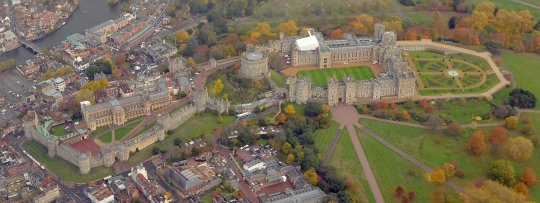
(Windsor Castle from the air, shared on wikimedia commons by Cmglee who has kindly made the image available under a creative commons license. It’s not clear whether Margaret was born in the castle or the manor of Old Windsor, which was popular with thirteenth century kings)
So far, this story has been something of a cosy family affair, but it had another, more serious side. Alexander III enjoyed a comparatively good relationship with Henry III, but he was also deeply conscious of his own dignity as king of Scots. Even as a father-in-law, the king of England was a figure who could undermine this. At various points during the young Alexander��s minority, Scottish nobles had solicited Henry III’s assistance in removing their political enemies and different factions (including Henry’s allies) had forcibly removed the king and queen of Scotland from the control of their opponents on more than one occasion.
By 1260, King Alexander was now nineteen and approaching the end of his minority. He had begun personally exercising control over his kingdom, but the shadow of these past squabbles still lingered.
There was also the matter of the Scottish kingdom’s status in the eyes of the English Crown. On more than one visit to England during his reign, Alexander was ambushed by demands that he perform homage to the English king for Scotland itself, above and beyond the homage he owed for his English lands. When this was requested at his marriage in 1251, the ten-year-old king had protested that he was unwilling to answer such a question without consulting his nobles. The subject was politely dropped, as it would be again in 1278 after Alexander’s more blunt refusal. Neither party wished to provoke unnecessary conflict, but while the King of Scots was not going to be led to surrender an inch of his prerogative, the English Crown had not relinquished its claims to sovereignty either.
The king’s visit to England in 1260 was therefore preceded by careful negotiations. On 17th August it was agreed that neither Alexander nor his councillors were to be asked about Scottish affairs of state without his consent. Nor was the English king to make any alterations to the ‘state’ of the king of Scots or his attendants while he was in England.
Similar stipulations were made on 30th September, but by then a new development had to be considered. The idea that Queen Margaret might become pregnant in England or that the heir to the Scottish throne might be born outwith the realm, now surfaced as a distinct possibility. Accordingly, a promise was extracted from Henry III that, in such a situation, he would not hinder the return of his daughter or her child to Scotland even (or perhaps especially) if Alexander III died unexpectedly.
Initially, such difficulties may have seemed a remote possibility. However the situation was complicated when King Alexander hurriedly quit the English court in November. Further oaths were called for, and although the king of Scots “granted that his spouse should remain with her mother in England till her lying-in”, the king of England had to promise to return his daughter and grandchild after her churching (specified here as forty days after the birth) or by Easter 1261.

(A fifteenth century depiction of the coronation of Alexander III of Scotland (r.1249-1286). Source: Wikimedia Commons.)
The oath covered various hypothetical situations, including the death of the mother, father, or child itself, and in the absence of Alexander himself, certain prelates and nobles were to have custody of the child- namely, the bishops of St Andrews, Aberdeen, Dunblane, and Whithorn, the earls of Fife, Buchan, Strathearn, Dunbar, and Mar, and powerful barons like John Comyn of Badenoch, Alexander the High Steward, Alan Durward, and Hugh de Abernethy. This arrangement was to be honoured regardless of the political situation in either Scotland or England, and oaths to this effect were not only sworn by Henry III but also his brother Richard of Cornwall and important English nobles like Queen Eleanor’s uncle Peter of Savoy, the earls of Gloucester and Hereford, the former justiciar Hugh Bigod, and John Maunsell. The king of England further promised to obtain the oaths of his eldest son the Lord Edward, the earls of Norfolk and Winchester, John Balliol, and the new justiciar Hugh Despenser. Clearly then, for all the friendly feeling between the kings of Scotland and England, when it came to such an important matter as the birth and upbringing of the heir to Scotland, Alexander III and his counsellors were not prepared to leave anything to chance.
It is unclear what the Scots were prepared to do if the English refused to honour these oaths- perhaps, indeed, they hoped it would never come to that since Alexander was young and healthy, and Henry III had his own problems in the early 1260s. On this occasion, at least, the king of Scots did not meet an untimely end and there was to be no unseemly wrangling with the king of England over the subject of the succession. Margaret of England and her child did not return home immediately after her purification feast, which took place around Easter 1261, but by late May arrangements were being made for their return to Scotland. Thus in late spring or early summer, the Queen of Scots bid farewell to her mother and departed Windsor with her baby, carrying the new princess of Scotland on the long journey north to her father’s kingdom.
The young Margaret of Scotland survived the perils of infancy. The following year Alexander III wrote to his father-in-law from Traquair, noting that “by divine favour” he, his wife, and daughter were all healthy. Little Margaret was later joined by two younger brothers, Alexander and David, which seemingly secured the Scottish succession, and she herself married Eirik Magnusson, king of Norway, in 1281, when she was around twenty. Despite the youth of the bridegroom, Margaret soon became pregnant and, in late March or early April 1283, she gave birth to a daughter in Tønsberg. This royal baby- again named Margaret but perhaps better known as “the Maid of Norway”- would eventually fall heir to Scotland in turn, when first her mother, then her uncle, and finally her grandfather Alexander III died in the years immediately following her birth.
The Maid of Norway was herself short-lived and destined never to set foot in her inherited kingdom. However during her brief time as acknowledged “Lady of Scotland”, there was again much detailed negotiation over the arrangements for her safe-keeping, upbringing, and marriage, and about the status of her realm. This exceeded even the arrangements made at the time of her mother’s birth, but in both cases the status of the two princess Margarets as potential heirs to Scotland had important implications for the constitutional position of the Scottish realm. The lives of both princesses sheds light on the hopes and anxieties of the Scottish political community regarding the prospect of female succession, custody of the heir to the throne, and, most importantly, the status of the realm and its relation to the English Crown. In the following century this last concern would become central to Scottish political life, but even in the comparatively peaceful reign of Alexander III, it seems to have been extremely important- so much so that it had to be taken into account even on a happy occasion like the birth of a royal baby.

(The coat of arms of Alexander II of Scotland, as portrayed in the thirteenth century ‘Historia Anglorum’ of Matthew Paris. Reproduced by permission of the British Library under a Creative Commons CC0 1.0 Universal Public Domain Dedication. Alexander II was father of Alexander III and grandfather of Margaret of Scotland. This coat of arms is one of the earliest portrayals of the lion rampant, the royal arms of Scotland, and it is inverted here to symbolise Alexander’s death)
Selected Bibliography:
- Calendar of Scottish Documents, vol. 1, edited Joseph Bain
- “Early Sources of Scottish History”, vol. 2, edited A.O.Anderson
- “The Flowers of History: Especially such as relate to the affairs of Britain ; from the beginning of the world to the year 1307 / Collected by Matthew of Westminster”, translated by C.D. Yonge
- “Annales Monastici”, vol. 3, ed. Henry Richards Luard (specifically the Chronicle of Dunstable)
- “Scottish Annals from English Chroniclers”, ed. A.O. Anderson
- “Royal and other historical letters illustrative of the reign of Henry III: From the originals in the Public Record Office”, ed. Walter Waddington Shirley
- “Calendar of the patent rolls, preserved in the Public Record Office”, vol. 5
- “John of Fordun’s Chronicle of the Scottish Nation”, ed. W.F. Skene
- “The Orygynale Cronykil of Scotland” by Andrew Wyntoun, vol. 2, ed. David Laing
- “The Wars of Scotland, 1214-1371″, by Michael Brown
As ever if you have any queries or want a source for a specific statement I have made, please let me know- the bibliography above is only a rough guide.
#Scottish history#British history#Scotland#Windsor Castle#thirteenth century#Margaret of Scotland Queen of Norway#Alexander III#Margaret of England#Henry III#Eleanor of Provence#Richard of Cornwall#Sanchia of Provence#Henry of Holyrood Bishop of Whithorn#1260s#historical events#births#childbirth#House of Canmore#house of plantagenet#England#women in history#women#princesses#Royal Family#Margaret of Scotland
21 notes
·
View notes
Photo


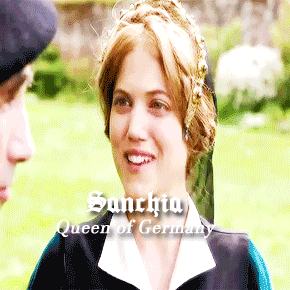
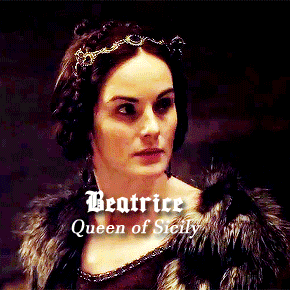
Margaret, Eleanor, Sanchia, and Beatrice were born into the royal family of the minor French county of Provence. But they would rise to be the most powerful women in Europe as the Queens of France, England, Germany, and Sicily, respectively.
Margaret, Queen of France (Spring 1221 - 20 December 1295) was born in Forcalquier, the eldest daughter of Ramon Berenguer IV, Count of Provence and princess Beatrice of Savoy. She was a famous beauty endowed with dark hair and dark eyes and was very close with younger sister Eleanor. In 1234 she married King Louis IX of France. Their eleven children included Queen Isabella of Castile, King Philip III of France, Duchess Margaret of Brabant, and Duchess Agnes of Burgundy. Though Louis loved his wife, he was stuck between his wife and his mother, Queen Blanche who treated Queen Margaret terribly. Margaret, however, was supportive of her husband, going with him on his first crusade. She became the first woman ever to lead a crusade, after her husband was kidnapped by opposition. Her strengthening of France’s relationship with King Henry III of England and Margaret’s sister Queen Eleanor resulted in the Treaty of Paris. King Louis died in his second crusade. Margaret then returned to her Provence where she died.
Eleanor, Queen of England (c. 1223 – 24/25 June 1291) was born in Aixe-en-Provence, second daughter of the Count and Countess of Province. Just like her sisters and mother, the brunette princess was a beauty, who was called by contemporary Piers Langtoft as “the fairest may of life.” In 1236, dressed in a glittering golden gown walking down the halls of Canterbury Cathedral, she married King Henry III of England. Theyir five known children included the famous King Edward I of England, Queen Margaret of Scots, and Duchess Beatrice of Brittany. The young Eleanor never felt at home in the primitive court of England, being so used to the extravagant—though small—court of Provence, and relied heavily on the comfort of her Savoyard relatives. Her association with those Savoy relatives made her unpopular with the people. Her and Henry’s favoritism of the Savoyards over the English nobility caused parliament to call for a new government. Although she tried to raise an army to restore the royal supremacy, it came of nothing. When her husband died, she was isolated in her son’s new England where she died at Amesbury, the convent she had retired to.
Sanchia, Queen of Germany (c. 1228 – 9 November 1261) was considered the most beautiful of the Provencial sisters. Sanchia and Beatrice were annoyed that their queen elder sisters forced them to sit on stools in their presence because of lack of queenship. This would change however, for both of them. In 1242, her sister Queen Eleanor contracted a marriage between Sanchia and Richard, 1st Earl of Cornwall. In 1257, Richard and Sanchia were crowned King & Queen of the Romans. Richard doted on his wife, basking her in extravagance and affection. Sanchia and Richard had only one child, Edmund. Only four years after becoming Queen, Sanchia died at only 33 years.
Beatrice, Queen of Sicily (c. 1231 – 23 September 1267) though she died young like her sister Sanchia, Beatrice by far led the most romantic and exciting life of the sisters. A beautiful princess, Beatrice’s marital prospects were increased when her father made her Countess of Provence in her own right. She had many suitors, including the King of Spain and Charles of Anjou, the latter whom she married. The match was one of affection, if not love, and produced seven children, including Countess Blanche of Flounders, Beatrice the wife of the titular Emperor of Byzantium, King Charles II of Naples, Philippe the titular King of Thessalonica, and Queen Isabella of Hungary. Beatrice & Charles were a team, including pushing Beatrice’s mother out of the control of Provence; setting up a highly efficient and lucrative administration in Provence; and accompanying each other on the Seventh Crusade. As Charles was not yet King, Beatrice was forced to sit at a lower table than her sisters when they all met. In 1266, she and her husband were crown Queen & King of Sicily, finally earning Beatrice a seat at the high table with her queen sisters.
#perioddramaedit#historyedit#royaltyedit#medevial history#margaret of provence#eleanor of provence#sanchia of provence#beatrice of provence#13th century BC#british history#english history#italian history#by olishka#german history#french history#gif#Our edits
257 notes
·
View notes
Photo





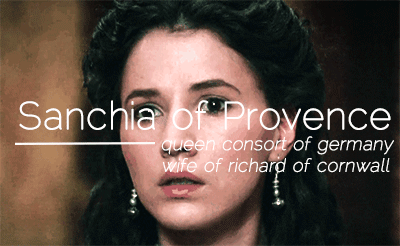


Sister Queens (5/7)
Marguerite of Provence (1221-1295), Eleanor of Provence (1223-1291), Sanchia of Provence (1228-1261), and Beatrice of Provence (1229-1267)
#sister queens#queen consorts#medieval women#french history#marguerite of provence#eleanor of provence#sanchia of provence#beatrice of provence#thirteenth century#historyedit
178 notes
·
View notes
Photo

This is honestly one of the saddest thing I’ve ever read and I hope to God she wasn’t aware of what he was doing during those 8 days :(
#plus i know she had virtually no chances of surviving at this point but imagine how awkward it would have been if she had#like come on richard that's just some bs#he wasn't that cruel to her most of the time in all fairness he just didn't gave two fucks about her which is pretty sad too#sanchia of provence#richard earl of cornwall
3 notes
·
View notes
Text
Did you guys know that at one point four sisters of the same household were married to the kings of Sicily, Germany, England, and France? Four sisters, queens of most of Europe at the time. The eldest two daughters, especially, were influential in their husband’s courts, and brought peace between France and England among other influences.
Perhaps the craziest part is that their parents were fairly minor nobles in comparison to their husbands, and not royalty. They WERE major sponsors of the arts, and paid money to troubadours and performers to essentially go to the courts of royalty and sing about how beautiful and talented their daughters were. And it worked!
You’ll find the four sisters on Wikipedia under these names, though different sources may cite them by slightly different names:
Margaret of Provence (wife of King Louis IX of France)
Eleanor of Provence (wife of King Henry III of England)
Sanchia of Provence (wife of Richard of Cornwall, King of Germany)
Beatrice of Provence (wife of Charles of Anjou, aka King Charles I of Sicily)
Can you imagine the family reunions?
595 notes
·
View notes
Text
Eleanor of Provence (1223-1291)

Eleanor became Queen consort of England as the wife of King Henry III from 1236 until his death in 1272. She was the mother of Edward I.
Eleanor was born in Aix-en-Provence in southern France, she was the second daughter of Ramon Berenguer IV, Count of Provence (1198–1245) & Beatrice of Savoy (1198–1267). She was well educated as a child, & developed a strong love of reading.
Amazing Fact! Her three sisters also married kings.
Margaret of Provence (1221 – 1295) became Queen of France, by marriage to King Louis IX.
Sanchia of Provence ((c. 1225 – 1261), became Queen of Germany when her husband Richard of Cornwall became king.
Beatrice of Provence (c. 1229 – 1267), became Queen of Sicily as the wife of Charles I of Anjou, King of Sicily.
Like her mother, grandmother, & sisters, Eleanor was renowned for her beauty. She was a dark-haired brunette with fine eyes. Piers Langtoft speaks of her as "The erle's daughter, the fairest may of life". Eleanor married King Henry III of England on 14 January 1236. The first time she set eyes on her husband to be, was at the wedding ceremony, held at Canterbury Cathedral. She is reported as dressed in a shimmering golden dress that fitted tightly at the waist & flared out to wide pleats at her feet. Her sleeves were long & lined with ermine. The newlyweds rode into London the same day & were greeted by a procession of citizens. Eleanor was crowned queen consort of England in a ceremony at Westminster Abbey.

Eleanor was a loyal & faithful consort to Henry, but she brought a large number of uncles & cousins, "the Savoyards", & her influence with the King & her unpopularity with the English barons created friction during Henry's reign. Her uncle William of Savoy became a close advisor of her husband. Eleanor was named regent of England when her husband left for Gascony in 1253. Eleanor was devoted to her husband's cause.
She was sailing down the Thames in July 1263 when her barge was attacked by citizens of London. In revenge for their dislike Eleanor had demanded from the city all the back payments due on the monetary tribute known as queen-gold (where she received a tenth of all fines which came to the Crown). In fear for her life as she was pelted with stones, loose pieces of paving, dried mud, rotten eggs & vegetables, Eleanor was rescued by Thomas Fitzthomas, the Mayor of London, & took refuge at the bishop of London's home.
When king Henry III died in 1272, her son Edward, who was 33 years old, became king of England. She stayed in England as the queen dowager, & raised several of her grandchildren, Edward's son Henry & daughter Eleanor, & Beatrice's son John.
She later moved to a convent; but she remained in contact with her son, King Edward, & her sister, Queen Margaret of France.
Eleanor died on 24/25 June 1291 in Amesbury. She was buried in Amesbury Abbey. The exact site of her grave at the abbey is sadly unknown making her the only English queen without a marked grave. Her heart was taken to London & buried at the Franciscan priory of Greyfriars.
Eleanor was renowned for her learning, cleverness, & skill at writing poetry, as well as her beauty. She was known as a leader of fashion, importing clothes from France. She often wore parti-coloured cottes (a type of tunic), gold or silver girdles into which a dagger was casually thrust, she liked to wear red silk damask, & decorations of gilt quatrefoil, & to cover her dark hair she wore jaunty pillbox caps. Eleanor introduced a new type of wimple to England, which was high, "into which the head receded until the face seemed like a flower in an enveloping spathe". She developed a love for the songs of the troubadors as a child. She bought many romantic & historical books, of stories from ancient times to contemporary romances written in the period (13th century).
Children;
Eleanor Henry III had nine children together, sadly most died in childhood. Eleanor was especially devoted to her eldest son, Edward. When he was seriously ill in 1246, she stayed with him at the abbey at Beaulieu in Hampshire for three weeks. Her second youngest child, Katherine, may have had a degenerative disease that rendered her deaf. When she died at the age of three, both King & Queen suffered overwhelming grief.
Edward I (1239–1307), married Eleanor of Castile (1241–1290)
Margaret (1240–1275), married King Alexander III of Scotland
Beatrice (1242–1275), married John II, Duke of Brittany
Edmund Crouchback, 1st Earl of Lancaster (1245–1296), married Aveline de Forz in 1269, who died four years later, he then married Blanche of Artois in 1276
Richard (1247–1256)
John (1250–1256)
William (1251–1256)
Katherine (1253 - 1257)
Henry (1256–1257)
Did You Know?
Eleanor of Provence is the 21st great grandmother of Queen Elizabeth II.
Love Royal History? Visit our Royal Blog
www.thebritishmonarchy.co.uk

Eleanor (left) and Henry III, depicted by Matthew Paris in the 1250′s
#history#Eleanor of Provence#Queen consort#Queen of England#royal history#British monarchy#Medieval history#House of Barcelona#Henry III#plantagenets#English history#royal family#ancestry
16 notes
·
View notes
Text

Four Queens Books Audio
Listen to Four Queens and audio biography books : new releases on your iPhone iPad or Android. Get any audio biography books : FREE during your Free Trial
Download now >> Four Queens Books Free In Here
Summary: Set against the backdrop of the turbulent thirteenth century, a time of chivalry and crusades, poetry, knights, and monarchs comes the story of the four beautiful daughters of the count of Provence whose brilliant marriages made them the queens of France, England, Germany, and Sicily. From a cultured childhood in Provence, each sister was propelled into a world marked by shifting alliances, intrigue, and subterfuge. Marguerite, the eldest, whose resolution and spirit would be tested by the cold splendor of the Palais du Roi in Paris; Eleanor, whose soaring political aspirations would provoke her kingdom to civil war; Sanchia, the neglected wife of the richest man in England who bought himself the crown of Germany; and Beatrice, whose desire for sovereignty was so acute that she risked her life to earn her place at the royal table. A compulsively readable narrative, Four Queens shatters the myth that women were helpless pawns in a society that celebrated physical prowess and masculine intellect. A riveting historical saga for fans of Alison Weir and Antonia Fraser.

0 notes
Text
Events 5.27
1096 – Count Emicho enters Mainz, where his followers massacre Jewish citizens. At least 600 Jews are killed.
1120 – Richard III of Capua is anointed as Prince two weeks before his untimely death.
1153 – Malcolm IV becomes King of Scotland.
1199 – John is crowned King of England.
1257 – Richard of Cornwall, and his wife, Sanchia of Provence, are crowned King and Queen of the Germans at Aachen Cathedral.
1644 – Manchu regent Dorgon defeats rebel leader Li Zicheng of the Shun dynasty at the Battle of Shanhai Pass, allowing the Manchus to enter and conquer the capital city of Beijing.
1703 – Tsar Peter the Great founds the city of Saint Petersburg.
1798 – The Battle of Oulart Hill takes place in Wexford, Ireland; Irish rebel leaders defeat and kill a detachment of militia.
1799 – War of the Second Coalition: Austrian forces defeat the French at Winterthur, Switzerland.
1813 – War of 1812: In Canada, American forces capture Fort George.
1860 – Giuseppe Garibaldi begins his attack on Palermo, Sicily, as part of the Italian unification.
1863 – American Civil War: First Assault on the Confederate works at the Siege of Port Hudson.
1874 – The first group of Dorsland trekkers under the leadership of Gert Alberts leaves Pretoria.
1883 – Alexander III is crowned Tsar of Russia.
1896 – The F4-strength St. Louis–East St. Louis tornado hits in St. Louis, Missouri, and East St. Louis, Illinois, killing at least 255 people and causing over $10 million in damage.
1905 – Russo-Japanese War: The Battle of Tsushima begins.
1915 – HMS Princess Irene explodes and sinks off Sheerness, Kent, with the loss of 352 lives.
1917 – Pope Benedict XV promulgates the 1917 Code of Canon Law, the first comprehensive codification of Catholic canon law in the legal history of the Catholic Church.
1919 – The NC-4 aircraft arrives in Lisbon after completing the first transatlantic flight.
1927 – The Ford Motor Company ceases manufacture of the Ford Model T and begins to retool plants to make the Ford Model A.
1930 – The 1,046 feet (319 m) Chrysler Building in New York City, the tallest man-made structure at the time, opens to the public.
1933 – New Deal: The U.S. Federal Securities Act is signed into law requiring the registration of securities with the Federal Trade Commission.
1935 – New Deal: The Supreme Court of the United States declares the National Industrial Recovery Act to be unconstitutional in A.L.A. Schechter Poultry Corp. v. United States, (295 U.S. 495).
1937 – In California, the Golden Gate Bridge opens to pedestrian traffic, creating a vital link between San Francisco and Marin County, California.
1940 – World War II: In the Le Paradis massacre, 99 soldiers from a Royal Norfolk Regiment unit are shot after surrendering to German troops; two survive.
1941 – World War II: U.S. President Franklin D. Roosevelt proclaims an "unlimited national emergency".
1941 – World War II: The German battleship Bismarck is sunk in the North Atlantic, killing almost 2,100 men.
1942 – World War II: In Operation Anthropoid, Reinhard Heydrich is fatally wounded in Prague; he dies of his injuries eight days later.
1950 – The Linnanmäki amusement park is opened for the first time in Helsinki.
1958 – First flight of the McDonnell Douglas F-4 Phantom II.
1960 – In Turkey, a military coup removes President Celâl Bayar and the rest of the democratic government from office.
1962 – The Centralia mine fire is ignited in the town's landfill above a coal mine.
1965 – Vietnam War: American warships begin the first bombardment of National Liberation Front targets within South Vietnam.
1967 – Australians vote in favor of a constitutional referendum granting the Australian government the power to make laws to benefit Indigenous Australians and to count them in the national census.
1967 – The U.S. Navy aircraft carrier USS John F. Kennedy is launched by Jacqueline Kennedy and her daughter Caroline.
1971 – The Dahlerau train disaster, the worst railway accident in West Germany, kills 46 people and injures 25 near Wuppertal.
1977 – A plane crash at José Martí International Airport in Havana, Cuba, kills 67.
1971 – Pakistani forces massacre over 200 civilians, mostly Bengali Hindus, in the Bagbati massacre.
1975 – Dibbles Bridge coach crash near Grassington, in North Yorkshire, England, kills 33 – the highest ever death toll in a road accident in the United Kingdom.
1980 – The Gwangju Massacre: Airborne and army troops of South Korea retake the city of Gwangju from civil militias, killing at least 207 and possibly many more.
1984 – The Danube-Black Sea canal is opened, in a ceremony attended by the Ceaușescus. It had been under construction since the 1950s.
1988 – Somaliland War of Independence: Somali National Movement launches a major offensive against Somali government forces in Hargeisa and Burao, then second and third largest cities of Somalia.
1996 – First Chechen War: Russian President Boris Yeltsin meets with Chechnyan rebels for the first time and negotiates a cease-fire.
1997 – The 1997 Central Texas tornado outbreak occurs, spawning multiple tornadoes in Central Texas, including the F5 that killed 27 in Jarrell.
1998 – Oklahoma City bombing: Michael Fortier is sentenced to 12 years in prison and fined $200,000 for failing to warn authorities about the terrorist plot.
2001 – Members of the Islamist separatist group Abu Sayyaf seize twenty hostages from an affluent island resort on Palawan in the Philippines; the hostage crisis would not be resolved until June 2002.
2006 – The 6.4 Mw Yogyakarta earthquake shakes central Java with an MSK intensity of VIII (Damaging), leaving more than 5,700 dead and 37,000 injured.
2016 – Barack Obama is the first president of United States to visit Hiroshima Peace Memorial Park and meet Hibakusha.
2017 – Andrew Scheer takes over after Rona Ambrose as the leader of the Conservative Party of Canada.
2018 – Maryland Flood Event: A flood occurs throughout the Patapsco Valley, causing one death, destroying the entire first floors of buildings on Main Street in Ellicott City, and causing cars to overturn.
0 notes
Text
Four Sisters, All Queens
Four Sisters, All Queens
Читать книгу Скачать книгу
Rich in intrigue and scheming, love and lust, Sherry Jones’s vibrant historical novel follows four women destined to sway the fate of nations and the hearts of kings…
Amid the lush valleys and fragrant wildflowers of Provence, Marguerite, Eléonore, Sanchia, and Beatrice have learned to charm, hunt, dance, and debate under the careful tutelage of their ambitious…
View On WordPress
0 notes
Photo
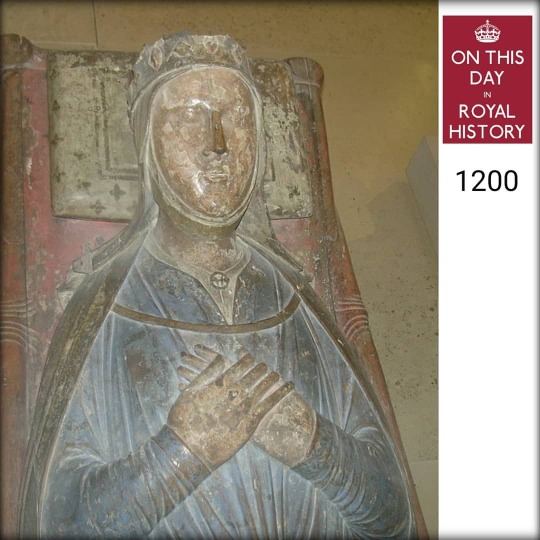
On This Day In Royal History
.
8 October 1200
.
Isabella of Angoulême is crowned Queen consort of England.
.
Isabella (born c.1186/1188 – died 4 June 1246) was queen consort of England as the 2nd wife of King John from 1200 until John’s death in 1216. She was also suo jure Countess of Angoulême from 1202 until 1246.
.
At the time of her marriage to John, the blonde-haired blue-eyed Isabella was already renowned by some for her beauty. Isabella was much younger than John & possessed a volatile temper similar to his own. John was infatuated with his young, beautiful wife; however, his acquisition of her had at least as much to do with spiting his enemies as romantic love.She was already engaged to Hugh IX le Brun when she was taken by John. It was said that he neglected his state affairs to spend time with Isabella, often remaining in bed with her until noon.
.
When John died in October 1216, Isabella’s 1st act was to arrange the speedy coronation of her 9-year-old son at the city of Gloucester on 28 October. As the royal crown had recently been lost in The Wash, along with the rest of King John’s treasure, she supplied her own golden circlet to be used in lieu of a crown. The following July, she left him in the care of his regent, William Marshal, 1st Earl of Pembroke & returned to France to assume control of her inheritance of Angoulême.
.
With King John she had 5 children, all of whom survived into adulthood,
.
King Henry III of England (b.1207–d.1272). Married Eleanor of Provence
.
Richard, Earl of Cornwall & King of the Romans (1209–72). Married firstly Isabel Marshal, secondly Sanchia of Provence, & thirdly Beatrice of Falkenburg.
.
Joan (1210–38), the wife of King Alexander II of Scotland.
.
Isabella (1214–41), the wife of Emperor Frederick II.
.
Eleanor (1215–75), who would marry firstly William Marshal, 2nd Earl of Pembroke; & secondly Simon de Montfort, 6th Earl of Leicester.
.
In the spring of 1220, Isabella married Hugh X of Lusignan, Count of La Marche, the son of her former fiancé, Hugh IX, to whom she had been betrothed before her marriage to King John. They had 9 children, all of whom survived into adulthood.
.
.
.
(at Westminster Abbey)
https://www.instagram.com/p/CGGT2xyHbRS/?igshid=hb3af5wkatlb
4 notes
·
View notes